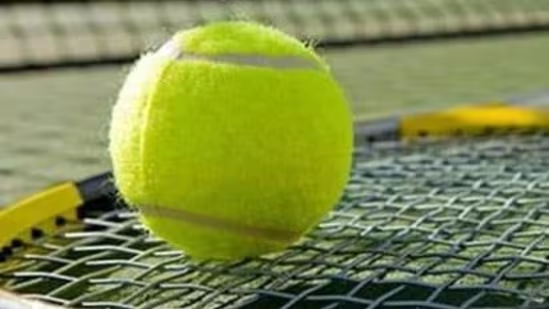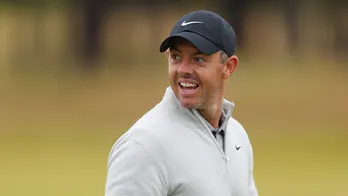Part II - The state of Indian tennis: Nowhere to play, no one to teach
Mention lack of structure in Indian tennis and Yuki Bhambri, one of the country's top players, puts it rather bluntly: “Everybody knows that. And that’s why we have these one or two (top level players) coming every 10 years. More a freak of nature.”  PREMIUM
PREMIUM
Let’s get the obvious out of the way. Tennis in India remains an urban sport, picked up by children in cities with access to swanky clubs, courts and academies. It’s also an expensive individual sport, with a rise in costs directly proportional to the climb of the professional ladder. Unless you’re consistently sitting in the top 100-150 of the world rankings and making some money from the game, playing tennis needs a lot of money.
The vast majority of players are barely hanging on, struggling to stay afloat within the crippled tennis ecosystem that has progressively weakened as the decades progressed from the great Indian high. From the 1940s through to the 1990s, there was a steady flow of top-100 players from India, people who even made Grand Slam semis and quarters in singles, and won Slams in doubles. Now, all of that appears a bridge too far.
What has changed?
“There was a clearly defined national tennis season, starting in October till March or so,” Ramesh Krishnan, who made the Wimbledon and US Open quarters in the 1980s, said.
In his days, Jaidip Mukerjea recounts going from Delhi to Amritsar to Lucknow to Kolkata to Allahabad to Jaipur for the grasscourt tournaments and from Indore to Mumbai to Hyderabad to Chennai to Trivandrum to play on clay courts. There was no prize money, but the travel expenses, lodging and food were taken care of. Some top players even got participation money, and they invariably turned up.
PART I | Stuck at the base: The grand slump in Indian tennis
“For instance, at the 1976 national championships held in Bombay Gymkhana Club, the players who participated were Vijay Amritraj, Anand Amritraj, Sashi Menon, Jasjit Singh, Ramanathan Krishnan, Jaidip Mukerjea, Premjit Lall, SP Misra. These were all the Davis Cuppers. And there were a host of youngsters trying to make a name. I think that kind of atmosphere is missing now,” said Ramesh.
Where do you play?
The All India Tennis Association (AITA) does host a number of tournaments, but has left the expenses on the players’ court. The singles champion at the Fenesta Open Nationals earns a good Rs3 lakh, while the winner at other AITA tournaments gets anywhere in the region of ₹1 lakh to Rs12,500, depending on the event category. That’s neither the kind of money that will attract top players nor fill the pockets of the upcoming ones.
“Not only have the overseas players stayed away, even the top Indian players stopped participating,” said Ramesh, pointing to a time when Indian tournaments were abuzz with foreign players. “It was sheer economics. The local tournaments could not come up with the funds even to attract the top Indian talent.”
“There are not enough tournaments down to support the players,” added Niki Poonacha, this year's singles national champion. “Even if you win it, there’s no break even. Where’s the motivation to play then?”
The professional tennis ladder works like this: a player can graduate from playing the domestic circuit to the ITF/Futures level to the Challenger level to the elite ATP/WTA level, based on his/her rankings. At each of these steps, India has a paucity of tournaments. In 2019 before Covid struck, the country hosted one ATP tournament, zero WTA events and a couple of Challengers. At the ITF level—where the mid-ranked pros ply their trade—sustainability is a challenge; in 2015, India hosted 19 ITF men’s events, which dropped to six in 2016, nine in 2017, four in 2018 and zero in 2019. In this pandemic-hit year, India has hosted seven, but there are none scheduled thus far in ITF's 2022 calendar for men.
“Lack of ITF and Challenger level tournaments is one of the biggest struggles in India. It forces players to travel abroad to play or train,” Poonacha said.
Decades ago, Indian players seldom had to be bothered about that. “All of us who touched those heights never went abroad to train,” Mukerjea said. “We used to have junior camps every year, where the best boys from each state would train together for a month. I remember being in one in Shimla. It was great fun.”
Now, almost every top Indian singles player is globetrotting. Prajnesh Gunneswaran, Ramkumar Ramanathan, Ankita Raina, to name a few, spend a majority of the season abroad, while Sumit Nagal has made Germany his training base.
“Expecting all the Indians to travel outside to play events is just not possible. Nobody has that kind of money. Otherwise, we should have enough funding for enough players to travel outside India. Then it’s maybe OK to not have enough tournaments at home. It’s got to be one or the other,” Prajnesh said.
On an average, for an Indian to participate in 15 tournaments every year on the ITF circuit within Asia, the player has to shell out in the region of Rs15-20 lakh, according to Poonacha. “Only if you make the semis in all those tournaments can you probably break even and have a little bit of money in hand,” Poonacha, who is ranked 742nd and has played ITF events in India and Tunisia this year, said. “The cost doubles if one goes to the US or Europe.”
Like the 26-year-old Poonacha did when he was 18, shifting to the Arena Tennis Academy in Alicante, Spain. Training there cost him 2,000 euros a month; throw in another 1,000 euros on stay and food and some more on travelling for tournaments in the country. “That was a lot of money,” he said. Two years into that on-and-off stint, he ran out of funds despite his parents selling off some property. Poonacha returned to India, training all by himself for a couple of years before being picked up by the Rohan Bopanna Tennis Academy.
Sharmada Balu, the junior national champion of 2008 and 2009, then touted as one of the bright prospects, has a strikingly similar tale. She headed to Europe to train but came back with empty pockets and no desire to continue.
These are just two examples among the countless others in India who find themselves lost, their professional tennis journeys meeting bumpy roadblocks because the supporting structure isn’t strong enough.
The Spain experiment made Poonacha aware of the gulf that exists between the system in India and Europe. “Everything is one level higher there,” he said. “Players have more exposure to tournaments, because they organise a lot of them; not just ITF or Challengers but local prize money ones where anyone can go and play. The overall education and knowledge of the game is higher. They have good coaches training not just the players but also other coaches.”
Where are the coaches?
Dearth of quality coaching and facilities is the biggest reason Indians are forced to go hunting abroad. “We have a lot of coaches around in India who set up academies, but they’re not of that professional level,” Mukerjea said.
A way to compensate that, according to Mukerjea, is for the federation to get more former players involved in the setup. The AITA has a National Tennis Centre in New Delhi and earlier this year held a short camp for the juniors under ex-Davis Cupper Zeeshan Ali. But the wings to pick and groom talent ought to be spread across India. “We have so many former players across the country. Get them involved. Give Ramesh a court. Give Somdev (Devvarman) a court. Tell them, ‘work with the kids, we will pay you’,” Mukerjea said.
Cricket has witnessed this with ever-increasing frequency—talent bursting from every nook and corner of the country, with access to quality coaching and facilities.
With that, cricket has also eaten into tennis' historic talent pool—children in big cities from financially robust families.
“After the IPL (Indian Premier League) came up, it has taken over. Every youngster in India wants to play cricket. There’s so much money, and a clear career path,” Mukerjea said.
What cricket—and indeed a few other sports in India—has also been able to do is strengthen its structure to complement the surging popularity. Tennis stagnated, slipped.
"We need to have good structure back home, a good junior system. Cricket does well in India because there is a fantastic structure,” the seasoned Bopanna said after India’s Davis Cup loss to Finland in September. “You can’t do it on your own, especially in tennis which is an expensive sport. Not only the player, the federation, the government…everyone has to be hand in hand to make a difference.”
Until then, keep your fingers crossed for the freak of nature who comes around once a decade or so.
Experience unrestricted digital access with HT Premium
Explore amazing offers on HT + Economist Start 14 Days Free Trial Already Subscribed? Sign In
Disclaimer: The copyright of this article belongs to the original author. Reposting this article is solely for the purpose of information dissemination and does not constitute any investment advice. If there is any infringement, please contact us immediately. We will make corrections or deletions as necessary. Thank you.







